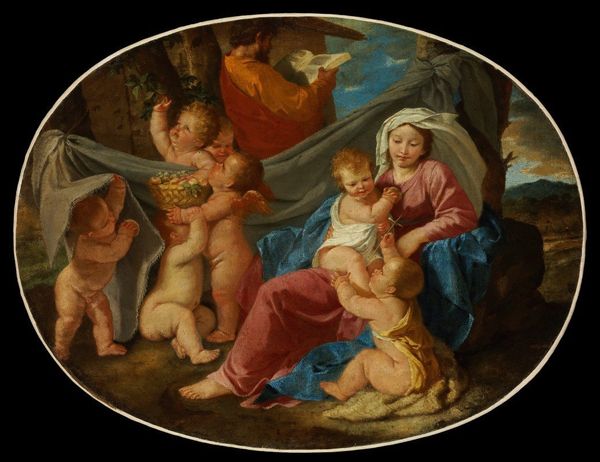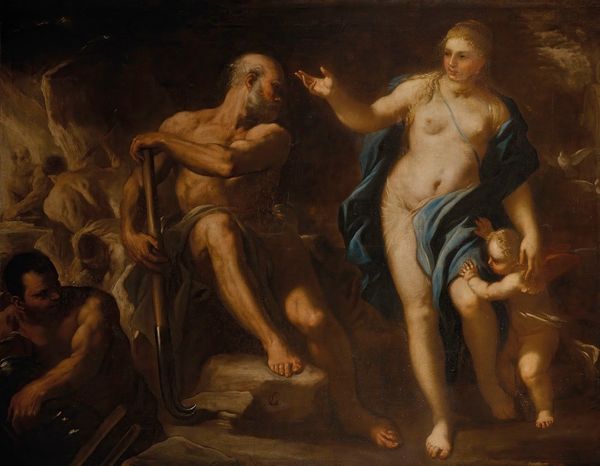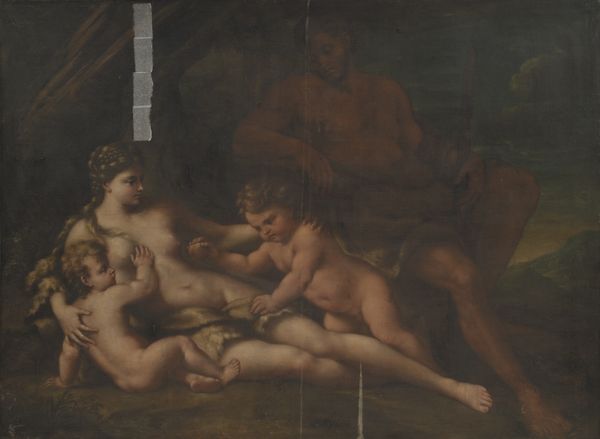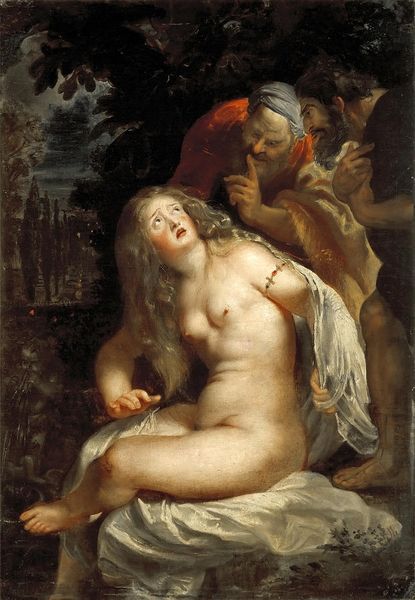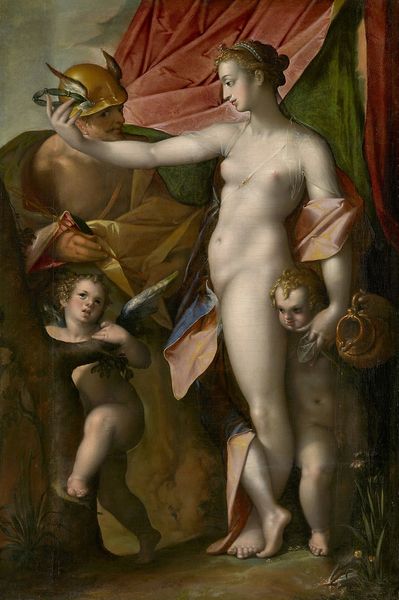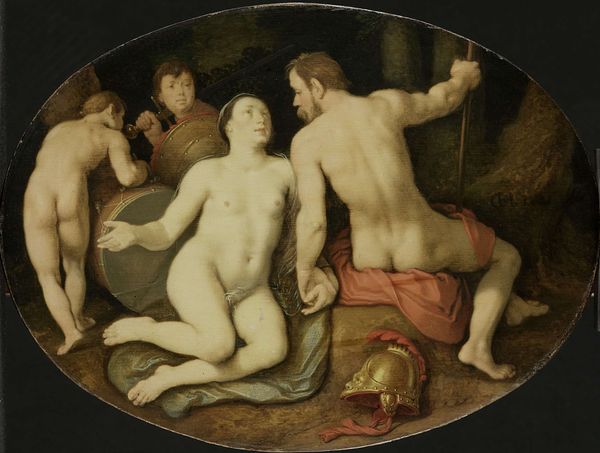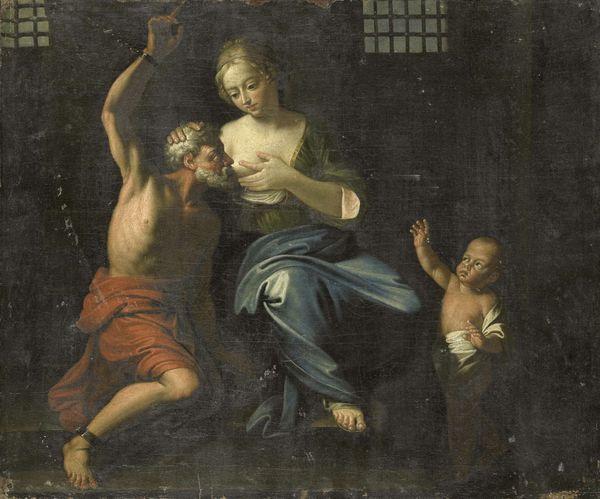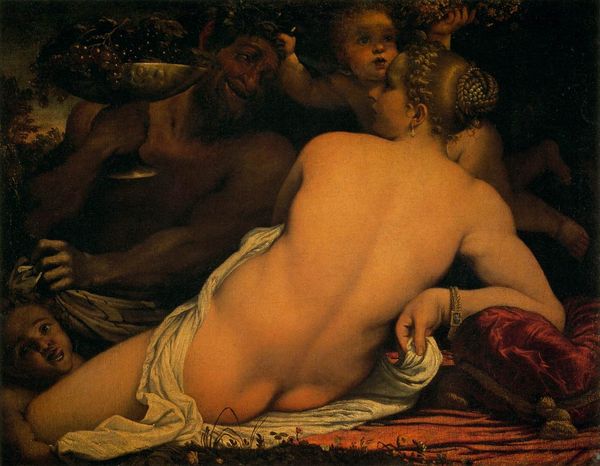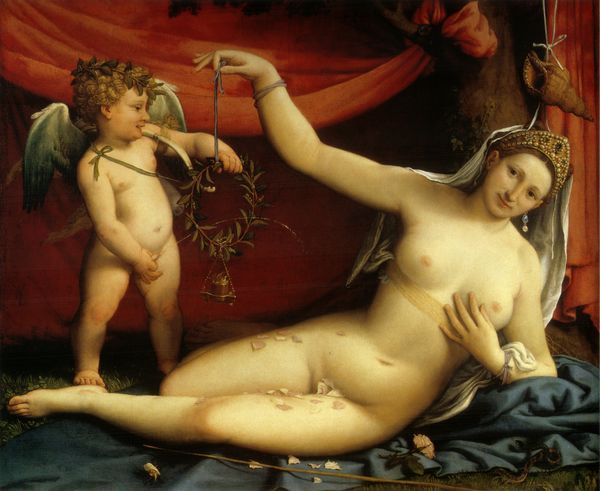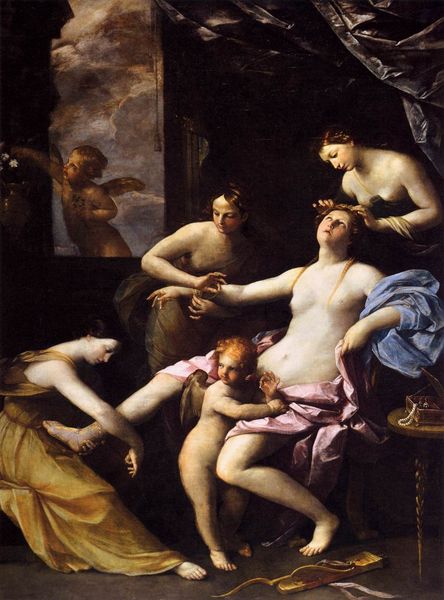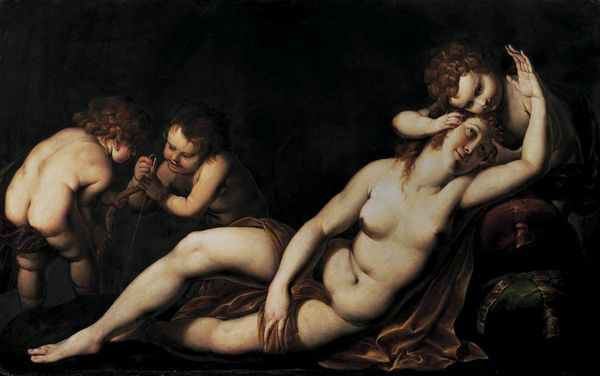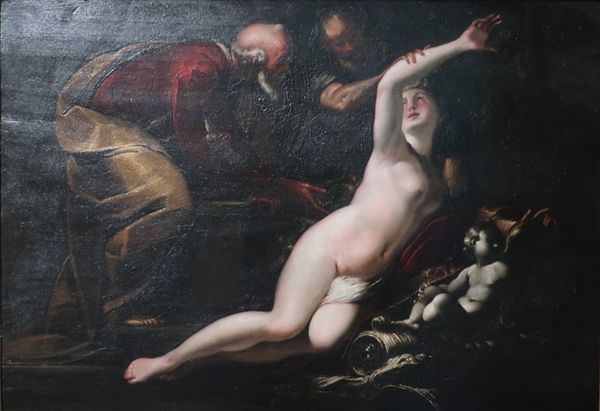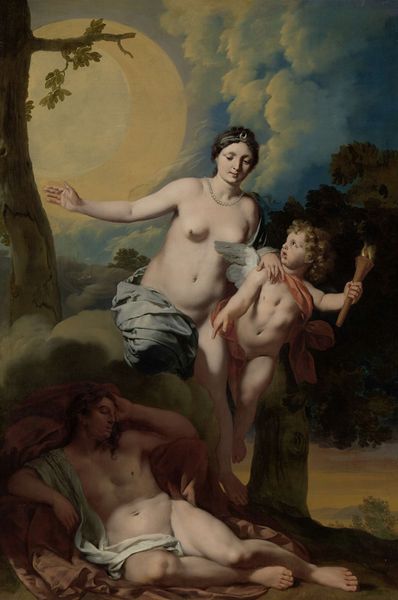
oil-paint
#
gouache
#
allegory
#
baroque
#
oil-paint
#
vanitas
#
nude
Dimensions: 15.5 cm (height) x 20.5 cm (width) (Netto), 24.2 cm (height) x 29.4 cm (width) x 3.2 cm (depth) (Brutto)
Curator: This artwork is titled "Vanitas," created between 1691 and 1727, attributed to Johann Sigismund Ebert. The medium appears to be oil paint on canvas. Editor: The first thing that strikes me is the slightly unsettling juxtaposition of beauty and decay. There’s a luminous quality to the woman, but it’s contrasted with the grim reality of the skull. The warm and earthy palette also hints at a certain mortality. Curator: Indeed. The 'Vanitas' genre flourished particularly in the 17th century. Considering the Dutch Republic’s socio-political climate—with its booming trade and burgeoning wealth—it's important to understand these paintings as a cultural reckoning, an interrogation of earthly vanity, or *vanitas,* from Ecclesiastes, against the inevitability of death. Editor: Exactly. The woman admiring herself in the mirror becomes a symbol for societal obsession with outward appearance, specifically female beauty, at the expense of recognizing deeper and potentially more socially pressing truths, such as material inequity. It reminds us to look critically at the ways we construct, perceive, and participate in systems that reinforce skewed ideals. The inclusion of art objects, scientific tools, and instruments suggests a culture of humanistic interest and enlightenment values of the period that could be construed as complicit in these structures. Curator: Precisely. The skull veiled in white drapery speaks to this fragility, a powerful memento mori. These paintings weren't just somber warnings, though; they acted as visual prompts encouraging a life of pious virtue, often amidst growing societal unrest. Editor: It’s impossible to overlook how gendered these critiques often were. The almost-nude woman becomes a lightning rod for moralistic pronouncements—it is, in my mind, part of the broader, often veiled or explicit sexual politics of that time. Where do we find this same judgment cast onto portraits of powerful, almost exclusively male, merchants? It invites conversations around body autonomy and socially conditioned, historically-charged anxieties about female agency. Curator: That’s an incisive point, demanding we scrutinize this painting through intersectional feminist readings, attentive to gender, class, and power relations embedded within. This work reveals an uncomfortable yet captivating dance between earthly allure and existential reflection. Editor: It prompts us to examine historical canons as actively shaping our present moment and encourages active analysis of art through contemporary social concerns. Curator: A fitting prompt, indeed.
Comments
No comments
Be the first to comment and join the conversation on the ultimate creative platform.
